Expert Crankshaft Material Selection Guide Supplier | B2B & B2C
Understanding the Critical Role of Crankshafts and Their Materials
At the very core of every internal combustion engine lies a component of immense strength and precision: the crankshaft. Often referred to as the "backbone" or "heart" of the engine, its primary function is to convert the linear, reciprocating motion of the pistons into the rotational force that ultimately powers the vehicle or machinery. This conversion process subjects the crankshaft to an incredible array of forces, including torsional twisting, bending loads from combustion pressure, and constant fatigue cycles. The stresses are immense, and the environment is unforgiving. A failure in this single component is not just a minor issue; it is a catastrophic event that can lead to the complete destruction of the engine block, pistons, and connecting rods.
Given its pivotal role and the extreme conditions it operates under, the selection of the right material for a crankshaft is not just a technical detail—it is the most critical decision in determining an engine's performance, reliability, and lifespan. Choosing an inadequate material can result in premature wear, stress fractures, or a complete break, leading to costly repairs and significant downtime. Conversely, selecting a material that is overly engineered for a standard application can lead to unnecessary expense. This is where our expertise as a leading component supplier becomes invaluable. We provide not only the highest quality crankshafts but also the knowledge and guidance to ensure you make the perfect choice for your specific needs, whether you are a large-scale engine manufacturer or an individual enthusiast building a dream machine. This comprehensive crankshaft material selection guide is designed to demystify the process and empower you with the information needed to select the ideal foundation for your engine.
Common Crankshaft Materials: A Detailed Comparison
The material of a crankshaft dictates its strength, weight, durability, and cost. The manufacturing process—casting, forging, or machining from billet—is intrinsically linked to the material and has a profound impact on its final properties. Below, we explore the most common materials and their associated manufacturing methods, highlighting the pros and cons of each to help you navigate your options.
Cast Iron (Nodular/Ductile Iron)
Cast iron crankshafts are the most common type found in mass-produced passenger cars and light-duty trucks. They are manufactured by pouring molten iron, alloyed with magnesium and other elements, into a sand mold shaped like a crankshaft. The controlled cooling process forms graphite into spherical nodules (hence "nodular" or "ductile" iron), which prevents the formation of crack-propagating flakes found in standard gray iron.
- Advantages:
- Cost-Effective: The casting process is relatively inexpensive and allows for complex shapes to be formed with minimal machining, making it ideal for high-volume production.
- Good Vibration Damping: The graphite microstructure in cast iron gives it excellent natural harmonic damping properties, contributing to a smoother and quieter engine operation.
- Sufficient Strength for Stock Applications: For naturally aspirated engines with moderate power output and RPM limits, a well-made cast crankshaft provides more than adequate strength and longevity.
- Disadvantages:
- Lower Tensile Strength: Compared to steel, cast iron has a lower tensile and fatigue strength, making it unsuitable for applications involving high cylinder pressures (e.g., forced induction) or high RPMs.
- Potential for Porosity: The casting process can sometimes introduce microscopic internal voids or porosity, which can become stress points and potential failure locations under high load.

Forged Steel (e.g., 4340, 5140, EN40B)
Forged steel crankshafts represent a significant step up in strength and durability. The process involves heating a steel alloy billet to a malleable temperature and then using immense pressure from a die-forging press to shape it. This process aligns the steel's internal grain structure to follow the contour of the crankshaft, resulting in a continuous, unbroken grain flow that dramatically increases strength and resistance to fatigue and shock loads.
- Advantages:
- Superior Strength and Durability: Forging creates a dense, uniform material free from the internal porosity of castings. The aligned grain structure provides exceptional tensile and fatigue strength, making it the material of choice for high-performance, racing, and heavy-duty diesel applications.
- Resistance to High Stress: Forged steel can withstand the immense cylinder pressures generated by turbochargers, superchargers, and nitrous oxide systems, as well as the stresses of high-RPM operation.
- Reliability: The manufacturing process results in a highly reliable component that can endure extreme punishment, providing peace of mind in demanding situations. Common alloys like 4340 chromoly steel offer a fantastic balance of strength, toughness, and cost.
- Disadvantages:
- Higher Cost: The forging process, tooling, and subsequent machining required are more complex and expensive than casting.
- Less Inherent Damping: Steel is stiffer and transmits more vibration than cast iron, which can sometimes necessitate more robust engine balancing or an external harmonic damper.
Billet Steel (e.g., 4340, 300M, EN30B)
Billet crankshafts sit at the apex of performance and cost. They are not cast or forged but are machined from a solid, cylindrical bar (a "billet") of high-grade steel. The entire crankshaft is carved out using sophisticated multi-axis CNC (Computer Numerical Control) milling machines. This method offers the ultimate in design freedom and material purity.
- Advantages:
- Ultimate Strength: Since they start as a solid piece of certified, high-quality steel, billet cranks have no potential for forging flaws and possess the highest possible material strength. Alloys like 300M are exceptionally tough and are used in the most extreme forms of motorsport.
- Maximum Design Flexibility: CNC machining allows for custom strokes, non-standard journal sizes, lightened counterweights, and other unique design features that are impossible or impractical with forging dies. This is ideal for one-off custom builds and top-tier racing engines.
- Absolute Precision: The machining process allows for incredibly tight tolerances, resulting in a perfectly balanced and dimensionally accurate component.
- Disadvantages:
- Highest Cost: Billet manufacturing is extremely time-consuming and generates a significant amount of material waste (swarf), making it the most expensive option by a large margin.
- Grain Structure: While the material itself is incredibly strong, it lacks the continuous, forged grain flow that follows the crankshaft's shape. However, the base strength of the premium alloys used typically more than compensates for this.
Factors Influencing Material Selection: Our Expert Crankshaft Material Selection Guide
Choosing between cast, forged, and billet is not always a straightforward decision. As your dedicated supplier, we help you analyze several key factors to determine the optimal balance of performance, cost, and reliability. Our expert crankshaft material selection guide is built around a thorough assessment of your project's unique demands.
1. Engine Application and Intended Use
The primary question is: what is the engine for?
- Stock Replacement/Daily Driver: For a standard passenger vehicle that will operate within factory parameters, a high-quality cast iron crankshaft is often the most sensible and economical choice. It provides smooth operation and more than enough durability for everyday driving.
- Street Performance/Hot Rod: For engines with moderate upgrades like a performance camshaft, improved heads, and a higher redline, a forged steel crankshaft (like 4340) is highly recommended. It provides a crucial safety margin as power levels increase.
- Competitive Racing (Drag, Circuit, Rally): In these environments, engine failure is not an option. The extreme RPMs and stresses demand the superior strength of a forged or, for top-tier competition, a billet crankshaft.
- Heavy-Duty Industrial/Diesel: Engines in commercial trucks, agricultural machinery, and power generators experience high torque and long-duration stress. Forged steel is the industry standard here due to its exceptional fatigue resistance and longevity.
2. Power Output, RPM, and Forced Induction
These factors are directly proportional to the stress on the crankshaft. A simple rule is that as horsepower, torque, and RPM increase, so does the need for a stronger material. The introduction of forced induction (turbocharging or supercharging) dramatically increases cylinder pressure and, consequently, the bending load on the crankshaft. For any forced-induction application, a forged steel crankshaft should be considered the minimum requirement to ensure engine reliability.
3. Budget and Value
We understand that budget is a key consideration for every project. Our goal is to provide the best value, not just the most expensive part. We work with clients to avoid over-engineering. There is no need to install a top-of-the-line billet crankshaft in a 150-horsepower engine. We help you invest your money where it matters most, ensuring you get a component that meets your performance goals without unnecessary expense. Our flexible support for both wholesale and individual orders ensures you get the right part at the right price.
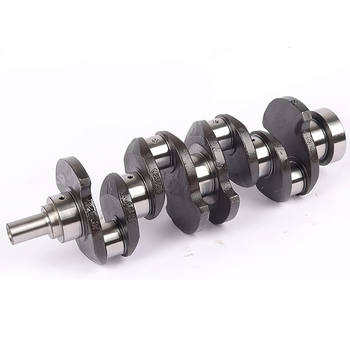
Our Manufacturing Excellence and Quality Assurance
A superior material is only as good as the process used to shape and finish it. We pride ourselves on being a supplier that combines an expert understanding of metallurgy with world-class manufacturing and quality control. This ensures that every crankshaft we deliver, regardless of material, meets the highest standards of precision and durability.
State-of-the-Art Manufacturing
Our production facilities are equipped to handle every stage of crankshaft manufacturing. From sourcing certified raw materials to the final polish, we maintain complete control over the process. Our capabilities include:
- Precision Forging and Casting: We partner with foundries and forges that use the latest techniques to ensure material integrity from the very first step.
- Advanced CNC Machining: All our crankshafts are machined on high-precision CNC lathes and mills. This guarantees that every journal is perfectly round, every oiling hole is precisely drilled, and every counterweight is shaped to exact specifications.
- Specialized Heat Treatment: Heat treatment is a critical step that defines the final hardness and toughness of the steel. Our crankshafts undergo multi-stage heat treating, quenching, and tempering processes, often including nitriding or induction hardening on journal surfaces for exceptional wear resistance.
- Meticulous Grinding and Polishing: Journal surfaces are ground and micro-polished to a mirror-like finish to reduce friction, promote proper oil film retention, and ensure long bearing life.
Uncompromising Quality Control
Quality is not just a goal; it's a system. Every crankshaft we produce is subjected to a rigorous battery of tests and inspections before it is approved for shipment.
- Material Certification: We begin by verifying the chemical composition of every batch of raw material with a spectrometer to ensure it meets the required alloy specifications.
- Dimensional Verification: During and after machining, each crankshaft is measured with advanced Coordinate Measuring Machines (CMM) to ensure all dimensions—stroke, journal diameter, runout, and more—are within our extremely tight tolerances.
- Non-Destructive Testing (NDT): We use methods like Magnaflux (magnetic particle inspection) to scan the entire surface of every forged and billet crankshaft. This process reveals any potential microscopic surface cracks or imperfections that are invisible to the naked eye, ensuring the component is structurally flawless.
- Dynamic Balancing: Every crankshaft is dynamically balanced to exacting standards. This minimizes engine vibrations, reduces wear on main bearings, and allows the engine to run smoothly at high RPMs.
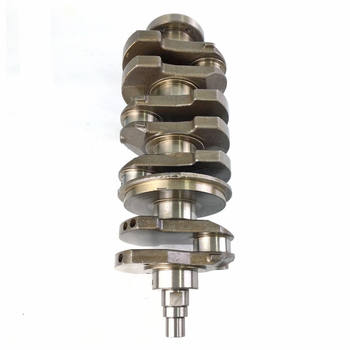
Partnering With Us: For Businesses and Individual Enthusiasts
Our mission is to be more than just a parts supplier; we aim to be your trusted partner in engine performance and reliability. We have structured our services to cater to the entire spectrum of the market, from large corporations to individual hobbyists, ensuring everyone has access to top-quality components and expert advice.
Wholesale and B2B Solutions
For engine builders, automotive remanufacturers, and industrial clients, we offer comprehensive B2B programs. We can handle large-volume orders, establish long-term supply contracts, and work with your engineering team to develop custom crankshafts tailored to your specific production needs. Our robust supply chain and manufacturing capacity ensure reliable delivery schedules to keep your production lines moving.
Individual Purchases and Enthusiast Support
We believe that professional-grade quality should be accessible to everyone. We proudly welcome orders from individual customers, small repair shops, and racing enthusiasts. Whether you are restoring a classic car, building a high-performance street machine, or competing on the track, our team is here to help. There is no minimum order quantity, and our sales staff is trained to provide the same level of expert guidance to every customer, ensuring you get the perfect part for your project.
Customization, Flexibility, and Service
We understand that one size does not fit all. We offer a wide range of customization options, allowing you to specify materials, stroke lengths, journal sizes, and balancing requirements. Our flexible approach means we can provide a standard replacement part or a fully custom billet creation. This entire process is supported by our detailed crankshaft material selection guide and our knowledgeable technical team, who are always ready to answer your questions and provide post-purchase support. Your success is our success, and we are committed to providing the components and the service you need to achieve it.
For more detailed information, please visit our official website:crankshaft material
About the author: Dr. Alistair Finch is a senior metallurgical engineer with over 25 years of experience specializing in high-performance powertrain components. With a Ph.D. in materials science, his research has focused on the fatigue life and failure analysis of forged and billet steel alloys under extreme stress. Dr. Finch is passionate about bridging the gap between advanced material science and practical application, helping both commercial and enthusiast clients build more powerful and reliable engines.
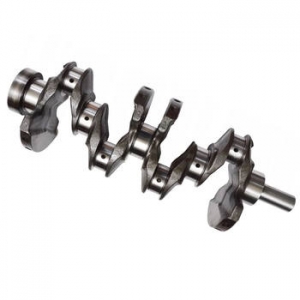 Pro Forged Steel vs Cast Iron
Pro Forged Steel vs Cast Iron
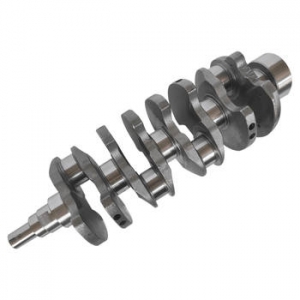 Expert Crankshaft Material Sel
Expert Crankshaft Material Sel
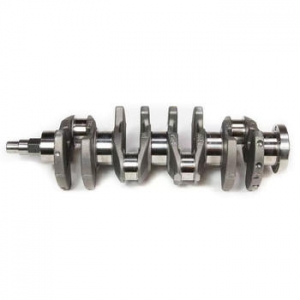 Trusted OEM Equivalent Cranksh
Trusted OEM Equivalent Cranksh
 Causes of Crankshaft Failure M
Causes of Crankshaft Failure M
